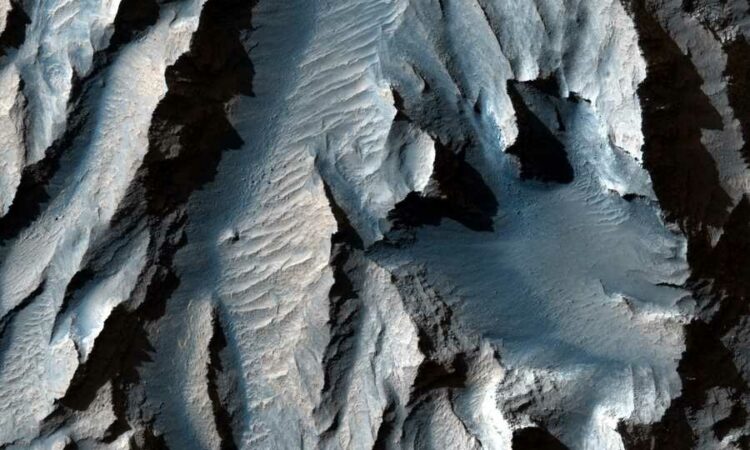The Grand Canyon has some new competition — at least when it comes to grounded travelers gawking at gorgeous images from afar.
NASA just released several new images from its Mars Reconnaissance Orbiter to give wanderlust-afflicted earthlings the clearest glimpse of the far-flung planet’s sprawling Valles Marineris canyon. The Valles Marineris canyon stretches for about 2,500 miles — about the distance from New York to San Francisco. It is an estimated 125 miles wide and approximately seven miles deep, putting it on par with the depths of the Earth’s oceans.
Officials believe the Valles Marineris canyon is the largest in the solar system, though they’re still not exactly sure how it formed. The European Space Agency describes a scenario in which the Martian crust was ripped open, collapsing into the network of valleys that now comprise Valles Marineris.
Video: Reawakened Yellowstone geyser won’t predict the volcanic ‘big one,’ scientists say (FOX News)
Total solar eclipse set to cut a path across parts of South America
FOX News
SpaceX launches SiriusXM satellite from Cape Canaveral
FOX News
Aztec 'tower of skulls' reveals more of its gruesome secrets
FOX News
Northern Lights set to thrill US skywatchers
FOX News
Amazon rock art discovery depicts prehistoric people and huge Ice Age beasts
FOX News
Humpback whale sighted in Hudson River off Manhattan
FOX News
As Atlantic prepares for 'near normal' hurricane season, region still reeling from last year's devastation
FOX News
Prehistoric cave believed to be 10 million years old found in Texas
FOX News
Total solar eclipse set to cut a path across parts of South America
FOX News
SpaceX launches SiriusXM satellite from Cape Canaveral
FOX News
Aztec 'tower of skulls' reveals more of its gruesome secrets
FOX News
“Landslides have also played a role in shaping the scene, especially in the northernmost troughs, where material has recently slumped down the steep walls. Mass wasting has also created delicate erosion of the highest part of the walls,” the agency wrote. “Strong water flows may have reshaped Valles Marineris after it was formed, deepening the canyon.”
Valles Marineris spans one-fifth of the distance around Mars and is believed to be 10 times longer and five times deeper than the Grand Canyon.
Researchers say there’s nothing quite like Valles Marineris on Earth, though they point to the terrestrial rift valleys in eastern Africa, which stretch from the Red Sea through Ethiopia, Kenya, Tanzania, and Mozambique, as coming close.
The latest photos of Valles Marineris were taken with high-resolution cameras — the most powerful sent to another planet yet.
Meena Thiruvengadam is a Travel + Leisure contributor who has visited 50 countries on six continents and 47 U.S. states. She loves historic plaques, wandering new streets and walking on beaches. Find her on Twitter and Instagram.
Source: Read Full Article










